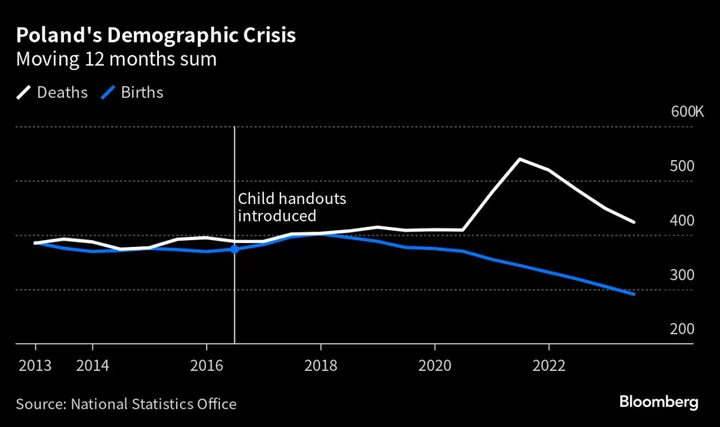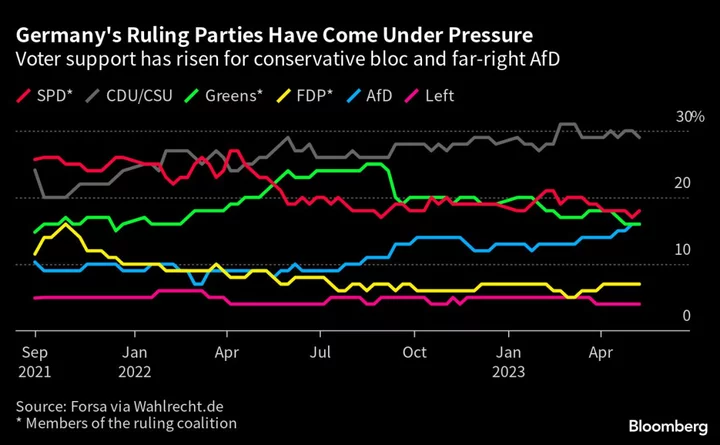Poland’s birth rate dropped to the lowest level since World War II, defying efforts by the nationalist government to grapple with the country’s aging population.
The number of births dropped to 290,975 in the year through June, down almost 9% from the previous year, according to the National Statistics Office. The trend, setting a new low, extends a decline in the European Union’s sixth-largest economy since 2018.
The failure to reverse Poland’s demographic shift has attracted criticism from the opposition, which is trying to unseat the ruling Law & Justice party in a parliamentary election expected in October. The party bolstered its marquee child-benefit policy during the campaign this year, promising to boost monthly payouts to families with children to 800 zloty ($200) a month from 500.
The benefit has broad support — the biggest opposition party has said it would introduce the increase earlier — though is having little traction over the demographic shift as an aging work force imposes increased pension costs and opens labor shortages.
While a growing proportion of foreigners — including an influx of some 1.5 million Ukrainian refugees — is filling labor gaps, Poland would need to accept an additional 2.75 million working-age migrants by 2032 in order to hold the proportion of retirees to the workforce steady, according to a report by the Social Security Office in Poland.
But migration is a polarizing issue in Polish politics. Although Poland has been lauded for sheltering Ukrainian refugees, the government in Warsaw sought to thwart an EU proposal that would impose fines for not meeting asylum quotas.
Poland refused to take in asylum seekers in 2015-2016 when the continent grappled with a tide of more than a million refugees from the Middle East and North Africa. At the same time, the number of work permits issued to migrants coming from outside Europe has surged.









